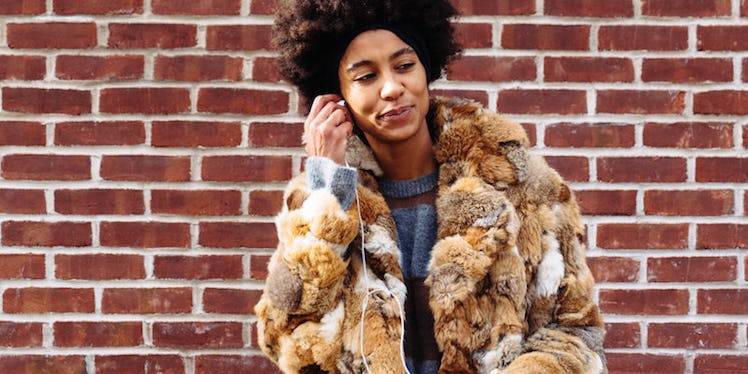I love animals.
I live with three dogs and a cat. I always make it a point to pet, cuddle and shower any animal I meet with love.
Nevertheless, I adore fur.
I have a long inventory that includes a mink jacket, a super-soft shearling coat and a Russian-style rabbit fur hat. There's even a 50 Cent-like chinchilla coat that's way too beautiful to wear.
Fur is deeply ingrained my culture.
I spent most of my childhood in Russia, where nearly everyone I knew had a fur coat called a "shuba." There, it isn't seen as a status symbol, just a way of life. And, frankly, it's a way of keeping warm in downright cruel winters.
Babies are bundled in teeny-tiny shearlings from birth because the furs are warm and relatively inexpensive.
PETA famously loves to lose its sh*t about furs and the people who wear them, releasing videos of horrific animal abuse in farms and factories regularly. Celebrities promote how they’d rather go naked than wear real fur.
Faux fur is in and the real deal is out.
Is that fair? I don't think so.
Animals are renewable resources.
I can already feel the comment section blowing up, but hear me out.
Animals reproduce. With the exception of endangered species, animals will continue to be a renewable source.
Additionally, most furs aren’t made from wild animals. Eighty-five percent of produced furs are made from mink, fox and chinchilla farmed specifically for their skin.
There are still parts of the world where the fur trade is unregulated -- specifically, China -- but there are plenty of laws governing what can and can't happen to an animal killed for its fur in North America.
Therefore, what makes it any different from indulging in a burger? Farms use questionable methods to obtain meat as well, yet most American people rarely think about animal welfare when there’s a juicy steak or a platter of buffalo wings on the menu.
Faux fur is worse for the environment.
Real fur has many environmental benefits, according to the International Fur Trade Federation. In fact, mink raised on farms are fed leftovers from abattoirs as well as both fish and food processing facilities. They recycle waste that would otherwise go into landfills.
Most faux furs, however, are made from petroleum-based products, which are derived from non-renewable resources.
Faux fur coats are made with nylon, polyester and acrylic, which are eventually treated with heat and chemicals.
Real fur has a longer shelf life.
No matter how well-made your faux is, it’s not going to stand up to the test of time the same way a real fur will.
A well-made mink coat will last anywhere from 20 to 25 years with proper care. Good luck getting your polyester faux fur to last even half that long.
A real, well-made fur coat is an investment piece and will stay with you for years, as long as it’s stored properly. A faux will shed and leave you needing to replace it season after season.
Real fur is designed to keep you warm.
There’s a reason the residents of the coldest climates in the world wear animal pelts.
They’re designed to keep heat in and cold out. We’ve worn fur coats for centuries because they were recognized as the warmest way to stay toasty.
According to the Optical Society, fur and feathers reflect infrared light, which helps insulate the coat.
Sorry, but your faux isn’t going to do that.
I can love animals and still wear fur.
Anti-fur activists are quick to point out if you truly love animals, you can’t love fur. I wouldn’t want my dog tortured or my cat skinned alive, right?
Any true animal lover will tell you the fastest way to tell if an animal is healthy or not is by looking at its coat. The animals used to create fur pieces have to be treated well or their coats would not go for quite as high of a price.
When it comes time for an animal to die, most ethical organizations will do so humanely. There are laws governing which traps can be used for capturing animals. Trapping even helps regulate endangered species by removing some of the animals that prey on them.
Don’t get me wrong, illegal hunting and disregard for fur trade laws still happen. Animals still get mistreated and abused, which is something I’m firmly against.
However, if regulated and done right, fur is still one of the best investments you can make in the long-run.
Sorry, PETA.
